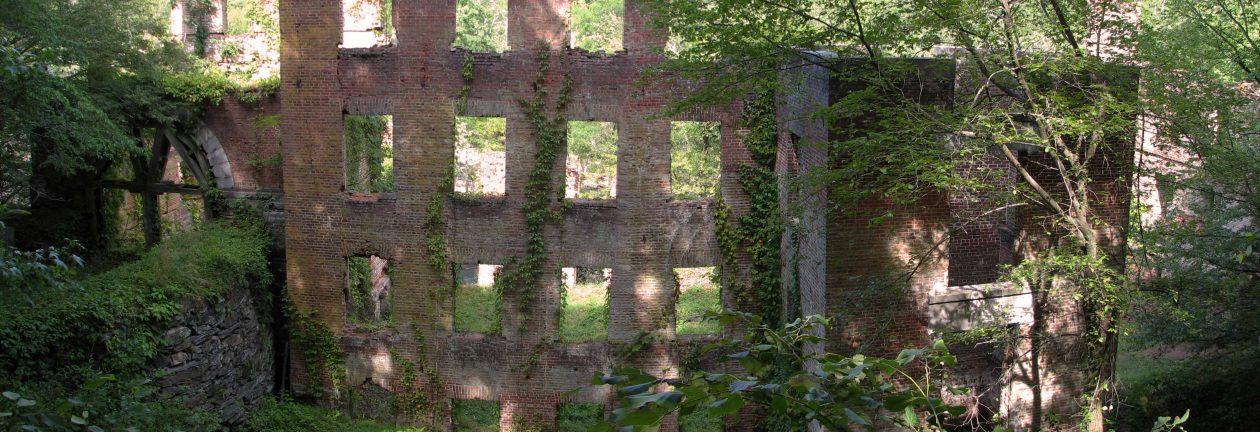TWENTY-SECOND MOVEMENT: LEBANON
Beirut, Lebanon
The plane from Cairo landed in Beirut International Airport after midnight. I disembarked the aircraft on the jet bridge, walked to Immigration, was surprised to learn I didn’t need a Visa (I did not do my research prior to coming here), and entered the passport control line. The man at passport control looked at my picture and then at me (I reassured him it was me and referred him to the page with my Indian Visa and a more recent photo), he then asked about my unemployment and I told him I had plenty of money and two credit cards, next he flipped through each page quickly looking to see if I had been to Israel, and lastly he stamped me in; the whole process was very quick, painless, and even easier than getting in to Egypt (which was also very easy and painless); I then grabbed my checked baggage, walked out of the airport, and took a taxi to my hotel (sadly paying more than I should have – I asked some local travelers how much I should pay and they gave me an even higher price than the taxi drivers offered; being as tired as I was, I didn’t even try to haggle like I should’ve). After about twenty minutes of driving, I reached the hotel, checked in, met my roommates (I was staying in one of their dorm rooms) – a Lebanese man studying for a German language exam tomorrow and a Korean writer. I then had a small bottle of water and took a much needed shower; I also put my shoes out on the balcony since they were incredibly repulsive smelling. Finally, after 02:00, I went to sleep.
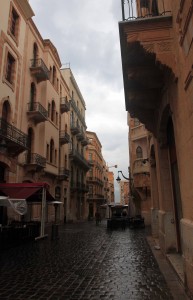
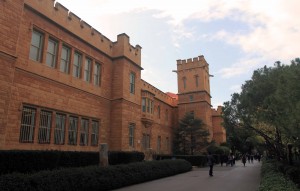
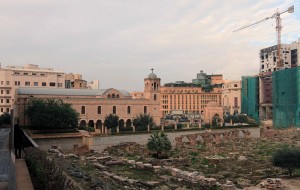
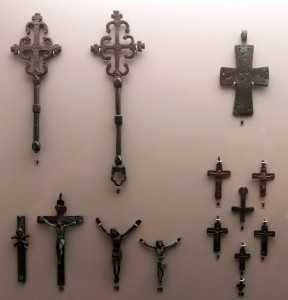
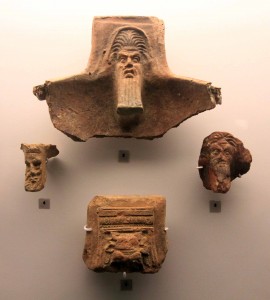
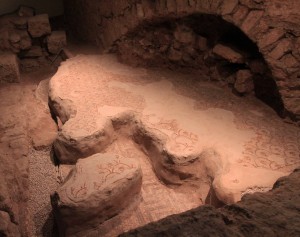
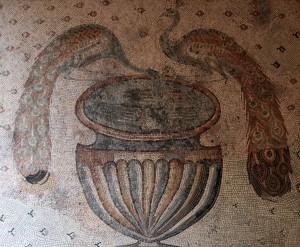
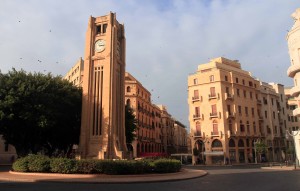
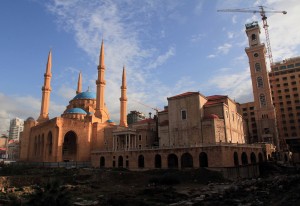
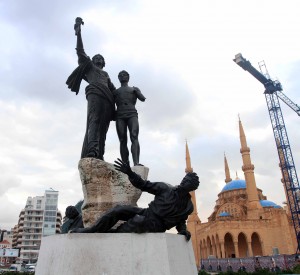
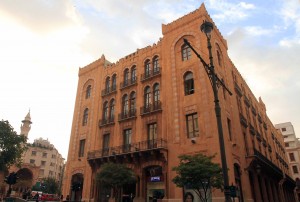
I woke up after 07:00 from the Lebanese man getting ready for his German language test; went out to the balcony, and saw that it was raining. I then took my time getting ready and after I showered, dressed, and grabbed my camera and tripod, I went outside with my umbrella at about 10:30. It rained on and off while I walked outside and it was a tad bit cold; I walked west toward the American University of Beirut, passing by the souqs (all modern and very European looking buildings now); I then stopped for Lebanese coffee (similar to Turkish coffee – the influence of the Ottoman Empire?) and a chocolate muffin at McDonalds. Next, I walked along the corniche for a short distance before heading to the Archaeological Museum on the campus of the American University (supposedly the oldest museum in the Middle East). The museum was free (but no cameras allowed) and had many artifacts from pre-historical times up until today, mainly focusing on pottery, glassware, metal objects, and limestone statues and bas-reliefs; the museum not only had explanations for each object, but also displays depicting and explaining the techniques used throughout history to make these objects (glassware, pottery, etc.); I was impressed having been to so many poorly curated museums now. After visiting the museum, I walked to Nejmeh Place, a heavily guarded section of downtown since the Parliament and Ministry of Finance are located there; though Beirut’s permanent military presence assigned to guard their state’s sacred structures lacked armored vehicles – as I had seen in Cairo -, I felt safer walking the streets here rather than there; the Lebanese soldiers looked more professional, better trained, and more in control of their assigned sectors than the Egyptian soldiers did while I was in Cairo (perhaps it helps that vehicular thru traffic was not allowed in the center of downtown). However, all this tight security came at a price; many shops in Nejmeh Center were closed and a McDonalds there was shut down and all but gutted; obviously not many people are going to central downtown anymore. I then passed by some Roman ruins (an old bath complex) and then passed the clock tower in the center of Nejmeh Place before entering St. George Greek Orthodox Church, a lovely church similar to the Coptic churches I had visited in Cairo where the altar(s) are hidden behind paneled walls and curtains. I then entered in to the archaeological museum under the church to see the ruins of a previous church leftover from medieval times, crypts, and also ruins of another Roman bathhouse – the current church was built in the eighteenth century, remodeled several times, was badly damaged during the Lebanese Civil War, and then finally restored to its current state. Inside the museum, I did learn that Beirut derives its name from Emperor Augustus’ daughter – the Emperor named the area of present-day Beirut Colonia Julia Augusta Berytus. After exiting the church museum, I walked outside and heard distant gunfire (although it didn’t sound too distant); I even heard some automatic gunfire and saw three military guards walk to one road to see if anything was happening; I then asked a waiter at a nearby restaurant what the shots were, thinking there might be a shooting range near the waterfront (as I had seen in Alexandria), but the waiter explained that it was Hezbollah; unfortunately, the waiter spoke little English and I was unable to gather whether or not it was serious, but, in all likelihood, it was probably celebratory gunfire from a rally; the shots lasted on and off for about a half hour and I was surprised to see no one paying any attention, going about their business, eating their food, and walking about (it reminded me of the film ‘Brazil’ when the terrorist bomb goes off and no one cares); so, I too just went about my business. I then walked by more Roman ruins south of the church and by the St. George Maronite Cathedral and the Al Amine Mosque (which looked beautiful in the downing sunlight). I then walked to Martyrs’ Square and looked at the shot-up bronze statues before walking to a nearby Dunkin Donuts for coffee and doughnuts; at this point I finally noticed a bird had shat and hit part of my jacket; it most likely occurred when the gunfire had started, many birds took off and obviously it scared the shit out of at least one. I then walked north to the Souqs of Beirut, looked around at all the expensive restaurants and designer clothing stores, before heading back to the hotel.
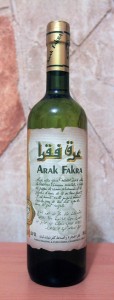
Just before entering the hotel, I stopped at a convenience store and bought what I thought was wine; the label was in French and I just assumed it was white wine and that “Arak Fakra” was the name of the vineyard; well, once back at the hotel I discovered that “Arak Fakra” is a very harsh liquor with a strong anise smell and taste, similar to Ouzo. Oh well, at least it’ll keep me warm when I reach the ski slopes. Back in the hotel, I talked with the Korean, met our new roommate (a Japanese man who decided to leave tomorrow to go to Jordan where it is safer), and then met another Korean, an Australian-Korean who had grown up in Sydney and had the accent to prove it. I talked with the Australian-Korean for a long time and he was excitedly explaining the differences between Catholics and other Christians and how it all came down to the apocalypse; he further explained that Freemasons, Catholics, the United States and other powerful entities are using Korea as a testing ground for the end of the world scenario, where the North is an atheist state dedicated to man and government, and the South is dedicated to money and capitalism, both opposites of each other and both far cries from God’s intention. He also gave me a number of titles to read on the subject. It was interesting to listen to, but I don’t buy conspiracy theories; I trust in Occam’s Razor and the incompetence of most governments and organizations; however, I am interested in learning about what other Christians believe when it comes to the apocalypse and the 1000-year reign of Christ – this would be good for my further studies in Theology. After discussing religion and the end of days for about two hours, I left to get dinner. I went to a restaurant on a local pub scene street and had hummus with meat and pine nuts, a salad (radishes, olives, celery), fish with a potato salad (made with peas, carrots, and corn), a Beirut beer, and a water – this all sounds pretty plain and looked better on the menu, which was written in French. After dinner, I bought a bottle of Lebanese white wine (for reals this time) and then walked back to the hotel. Immediately upon returning, the Australian-Korean, the Korean-Korean, and a Belgian invited me out to a pub to meet some other people; I decided to join them and we walked right back to where I had just come from, on that pub street, right across the store I bought the wine at. We mostly hung outside the bar and I then bought a beer at the store across the street (no sense in paying bar prices when I’m standing outside anyway). While drinking and talking, the Australian-Korean commented that I look like Charlie Sheen; that makes him the fourth person I’ve met in my life that has made that observation; we do have similar foreheads, eyes, and noses, but Charlie has a penchant for drugs and porn starlets; I’m not entirely opposed to the latter, but I prefer to have a warmer body keep me company. After hanging outside the bar for close to an hour, the Korean-Korean and I decided to walk back to the hotel and eventually we both went to sleep.
